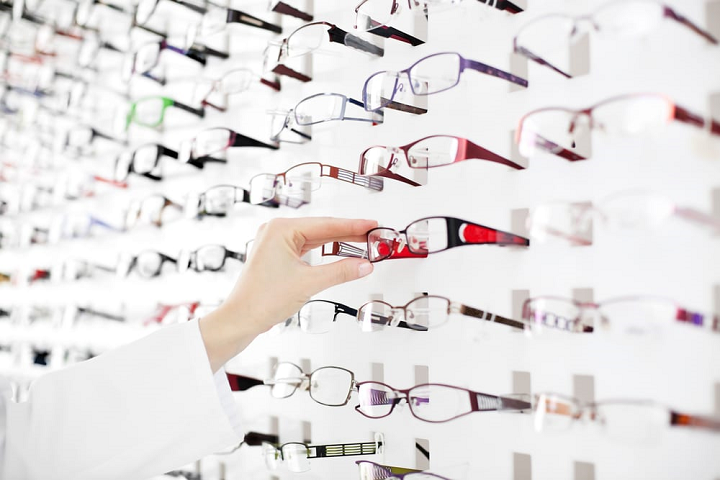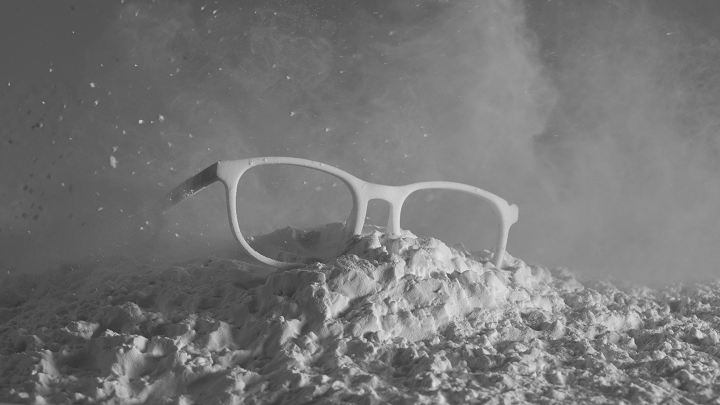The latest AM market research report, titled “Markets for 3D Printing Eyewear 2021“, from SmarTech Analysis focuses on the adoption of 3D printing in the eyewear sector. This includes not only ophthalmic lenses, sunglasses, and eyewear frames, but also smart eyeglasses and sporting gear. In order to get the latest market information, a large number of interviews were conducted with the industry’s key drivers. While SmarTech predicted in last year’s report that 3D printed eyewear would grow into a $3.4 billion industry by 2028, that number has changed a bit, with the firm projecting that “AM- specific yearly revenue opportunities in the eyewear industry will amount to $2.26 billion by 2030, growing at a CAGR of 20% from 2020.”
“The report provides an unprecedented analysis deep into the revenue opportunities offered by the global eyewear segment, reflecting advancements in all three key segments where 3D printing technologies are impacting footwear production: prototyping, tooling and final parts. The report also provides an updated analysis of how AM hardware, AM materials, AM service and AM software are impacted by the evolving eyewear industry scenario,” SmarTech wrote.
The report features a geographic breakdown and localized forecast of the 3D printed eyewear market for the application, hardware, and material segments for the first time. With this information, the report predicts that overall revenues will be more than $5 billion a year; this number includes the amounts generated by the three main industry-specific sections of services, materials, and hardware, in addition to software.
In order to look at revenue opportunities in the sectors from every direction, SmarTech identified and classified all of the segment’s main operators, and analyzed the AM technologies and material classes, to determine their potential on printing eyewear parts.
“SmarTech Analysis expects that future adoption of 3D printing in manufacturing will evolve through two different major pathways,” the report states. “One is by providing the means for several smaller studios to challenge the larger groups by expressing new ideas and offering new customization options. The other is by large groups such as Luxottica and Safilo (among others) to expand their prototyping and product development activities, bringing production in-house to respond even more rapidly to changing fashion trends and client demands. In both cases the value proposition of 3D-printed eyewear is going to significantly affect both production cycle and supply chain dynamics.”
For both the current and future market, the report states that end-use parts is the main application for 3D printed eyewear, which makes sense.
“The application analysis thus focuses on the opportunity around final parts, providing the most accurate data analyses and projections to date of the number and revenues associated with eyewear mass customization, smartglasses advancements and on-demand production,” SmarTech wrote.
While some other AM technologies are being used, such as filament extrusion, material jetting, and photopolymerization, powder bed fusion (PBF) additive manufacturing is still the most common by far for eyewear applications. Also used for prototyping, PBF 3D printing is used to fabricate between 80-85% of all final parts, including the full end-use products.
SmarTech’s report also looks at the materials used to 3D print eyewear applications, and notes that the most common is still nylon, particularly PA12, which is referred to as “the most versatile and effective material used in all powder bed fusion technologies.”
“In the future it is possible that other nylon materials (such as PA6 and PA66 form BASF) or composite powders containing carbon or glass chopped fibers may become more common as 3D-printed eyewear demand increases and along with the requirements for more advanced material properties. Variations already exist today mainly in terms of finishing treatments,” the report states.
The report identifies some of the sector’s main stakeholders as BASF, EOS, Facebook, HOYA, HP, Luxexcel, Luxottica, Materialise, Safilo, as well as numerous design studios and startup companies. Out of this list, 3D printing service providers that offer specialized eyewear production lines, like Materialise, are the main leaders, and will likely enjoy the most benefits here.
In addition to covering topics such as main AM adoption drivers and trends in the eyewear sector, what’s limiting this adoption, and taking a closer look at the eyewear mass customization workflow, the new SmarTech report also covers the role that 3D scanners play in the AM eyewear workflow “in a multitude of adoption verticals.”
“Both Apps (that leverage the 3D vision capabilities of the latest mobile devices) and dedicated 3D scanners are now being implemented in the eyewear industry as this consumer product segments moves toward digital production and mass customization,” the report states. “Some of the start-ups offering these services have closed but the majority is growing and evolving its product offers.”
You can request an excerpt, or purchase the entire “3D Printing in Eyewear: From Mass Customization to Smartglasses 2021” report by SmarTech Analysis here.
Subscribe to Our Email Newsletter
Stay up-to-date on all the latest news from the 3D printing industry and receive information and offers from third party vendors.
You May Also Like
3D Printing Unpeeled: New Arkema Material for HP, Saddle and Macro MEMS
A new Arkema material for MJF is said to reduce costs per part by up to 25% and have an 85% reusability ratio. HP 3D HR PA 12 S has been...
3D Printing News Briefs, January 20, 2024: FDM, LPBF, Underwater 3D Printer, Racing, & More
We’re starting off with a process certification in today’s 3D Printing News Briefs, and then moving on to research about solute trapping, laser powder bed fusion, and then moving on...
3D Printing Webinar and Event Roundup: December 3, 2023
We’ve got plenty of events and webinars coming up for you this week! Quickparts is having a Manufacturing Roadshow, America Makes is holding a Member Town Hall, Stratafest makes two...
Formnext 2023 Day Three: Slam Dunk
I’m high—high on trade show. I’ve met numerous new faces and reconnected with old friends, creating an absolutely wonderful atmosphere. The excitement is palpable over several emerging developments. The high...


































